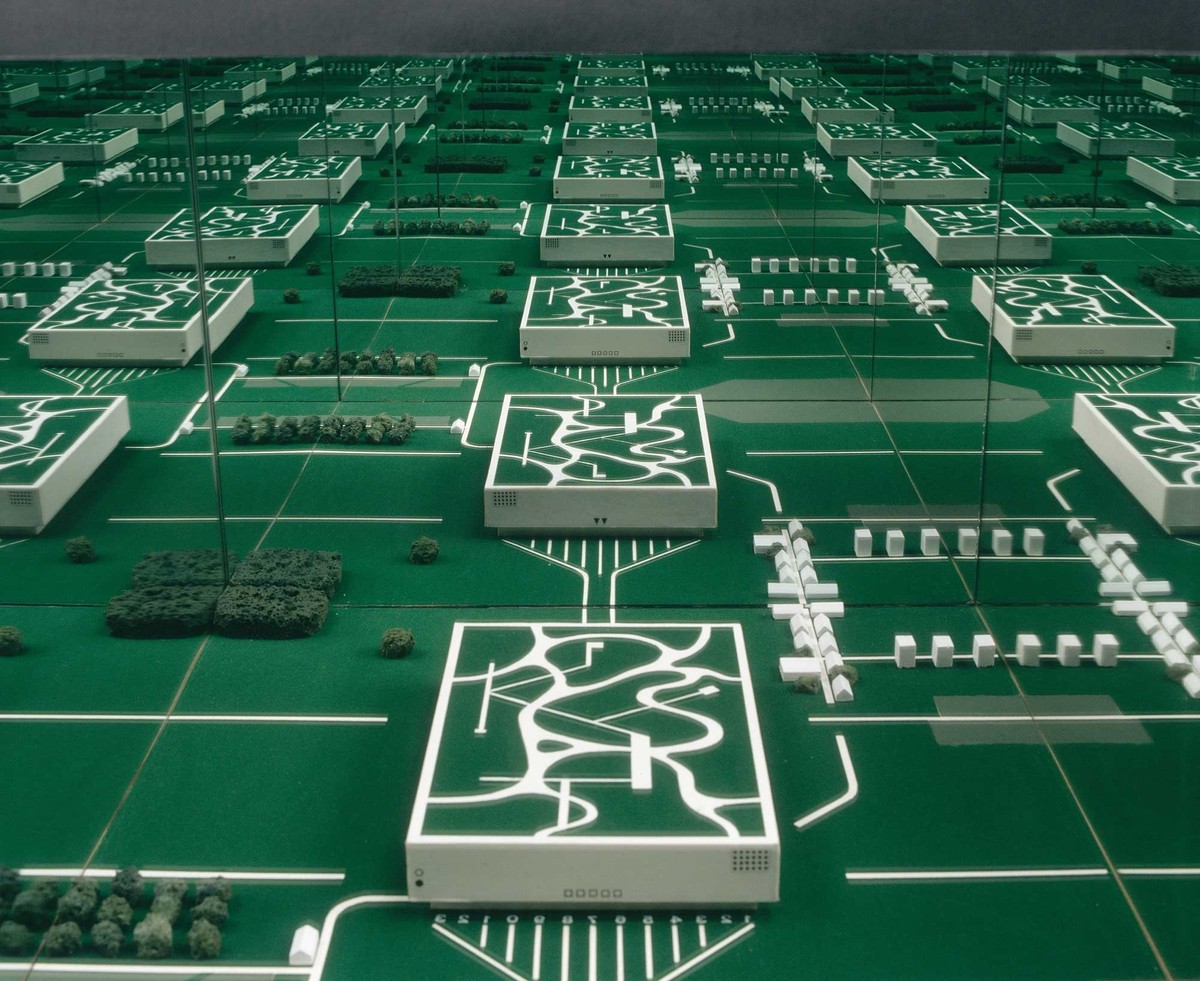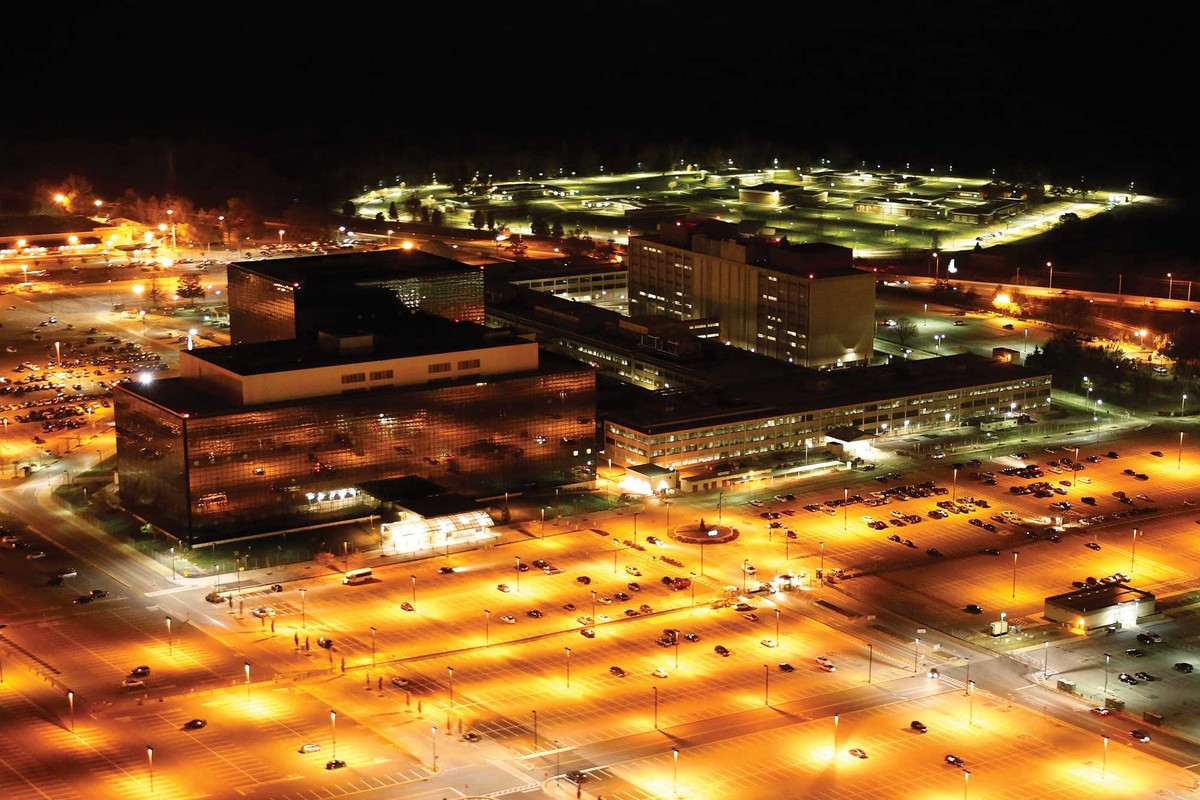Eyes That Do Not See: Tracking the Self in the Age of the Data Center
No type of building embodies 21st-century culture more distinctly than the data center. Almost imperceptibly, we’ve let these telematic spaces into our lives. The physical reality of the cloud, they are the substance behind the portable, networked devices that we peer into as we stumble about our daily business. While data centers house both our public, if nonphysical, gathering spaces and our private refuges, their builders have little interest in treating these structures as works of architecture. Well aware that the average data center becomes obsolete in less than 10 years, developers care about keeping costs low, not about such structures’ physical appearance.
Data centers are infrastructural buildings. Like the early
20th-century factory, today’s data center is pared down to its functional
essence. But there are crucial differences between data centers and factories.
Foremost among them is their outward appearance: while during the Industrial
Revolution factories served as conspicuous symbols of power and modernity, data
centers strive for invisibility. With towering smokestacks, blast furnaces, and
exposed piping, factories were carefully tuned to specific purposes and could
be effectively decoded from a distance. Unmistakable and imposing, the factory
became a symbol of modernity and the forces of capital, leading Henry Adams to
reflect that by the time of the Paris World’s Fair of 1900, the dynamo had
become as important a symbol as Christ on the Cross had been in the Middle
Ages.1 Modernist image-makers such as Alvin Langdon Coburn and Charles Sheeler,
among others, sought to capture the immense forces that factories embodied,
giving aesthetic form to the technological sublime.2 Architects, too, saw
factories—along with other products of engineering—as inspiration. Walter
Gropius compared grain elevators, coal silos, and factories to the buildings of
ancient Egypt, while Le Corbusier wrote “Eyes That Do Not See…,” an elegy to
ocean liners, automobiles, and airplanes, condemning those architects stuck in
the stylistic garb of the past, who were unable to comprehend the modernity
inherent in the optimized products of engineers.3
During the early 20th century, the factory was not merely an object of fascination that would produce an aesthetic in tune with the time; it was a contested political site. For the Left, from Karl Marx to Gropius, it was to be remade as a temple to human labor. For the technocratic Right, however, from Frederick Winslow Taylor to Le Corbusier, embracing the factory meant forcing the workers within it to submit to the rule of reason, allowing machinery to operate at its full potential. In contrast, data centers rarely serve as sites for contestation. Operated by a skeleton crew of technicians, the majority of data centers are located in suburban or, increasingly, exurban sites, far from city cores. Connected by impulses traveling at the speed of light over bundles of high-capacity fiber-optic cable, contemporary data centers huddle near sources of power, in secure, anonymous locations away from prying eyes and the threat of protestors. Thus, even the recent spate of protests against rampant National Security Agency (NSA) spying in the wake of Edward Snowden’s revelations took place not on the highways by data centers but in more familiar, timeworn public spaces such as streets and plazas.
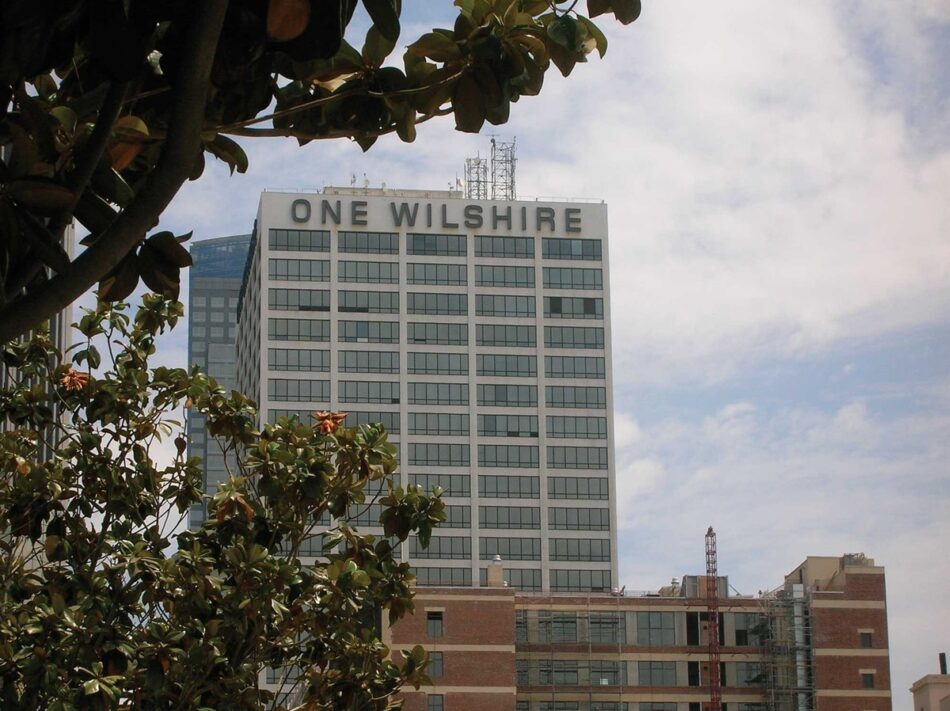
If anything marks contemporary protests as distinctive from historical iterations, it is that they are broadcast immediately via mobile devices (through data centers) to be shared on social networks (in data centers). In other words, it’s the augmentation of protests—and of everyday life—that distinguishes network culture. In this respect, the anonymous architecture of data centers is perfectly suited for network culture. They are not an architecture that screams Ezra Pound’s old saw, “Make it new!” Rather, developers either augment existing buildings, as in the case of One Wilshire in Los Angeles, leaving outsized cooling equipment on the rooftop as the only evidence of what lies within, or, increasingly, they house data centers in the familiar, anonymous architecture of the big shed.4 In the latter permutation, data centers find themselves at home in landscapes populated by other big sheds—shipment processing facilities, warehouses, distribution centers, even big-box retailers—the processing hubs that make network society run. Like the structures of Archizoom’s 1969 No-Stop City, the data center is derived from the warehouse and the supermarket, not a place of production as much as of throughput, aimed at maximizing flows. Today, No-Stop City has reached a new pinnacle, absorbing—and being animated by—the data center. And why not? If No-Stop City was an architecture of the “well-equipped parking lot,” what more is the data center than a well-equipped parking lot for our virtual selves?
Herein lies the crux of the problem for architects. Developers of today’s data centers eschew architecture. No contemporary data center compares to John Carl Warnecke’s granite-clad 1974 AT&T Long Lines Building in Manhattan, which stood as a bold statement of the company’s confidence that it would survive in the face of both a projected near-hit by a nuclear bomb and more immediately, an increasingly hostile urban environment. Instead, contemporary data centers merely appropriate the banal form of the big box.
But more than just a matter of economics or security, the data center’s relationship to architecture embodies our cultural condition. Where the factory embodied processes of industrialization and modernization, data centers exemplify what Gilles Deleuze calls “control society.” In discussing the emergence of modern forms of discipline, surveillance, and control, Deleuze cites Michel Foucault’s observation that the industrial era gave birth to a disciplinary society, marked by discrete spaces of enclosure in which one endlessly was put in one’s place—from the school to the barracks to the factory to the hospital. These sites were devoted to ordering time and space, to distributing individuals into a productive force.5 Deleuze sees that system rupturing under its rigid constraints in the face of new systems that promise to be more adaptable, reformed, humane, and equitable. Rigidity is replaced by flexibility; obedience, by choice.
But the control society does not do away with power; on the contrary, power is now far more pervasive and efficacious. Instead of enclosures, control operates through modulations, in a continuously applied system that can make its demands on individuals at every moment, regardless of their whereabouts. Physical spaces are replaced by electronic access codes. Under the guise of greater freedom and flexible work arrangements, networked devices pervade everyday life, constantly issuing their demands, and ceaselessly reiterating them. Instead of resisting attempts at facilitating work taking over our lives, we respond by turning to “life hacking,” a tool to optimize our productivity.6
The data center is the purest site of modulation in control society. Its function is not to maximize storage but to optimize flow, making possible the barrage of status updates pushed at us—be they from social networking sites, news feeds, or e-mails—that we condition ourselves to respond to instantly. Even capital is subject to this logic. If the factory was the site where wealth was created during the Industrial Revolution, today’s most advanced levels of finance—which operate in specialized data centers such as NYSE Euronext’s Global Liquidity Centers—extract wealth from algorithmic trades that invest in and produce nothing, profiting instead from momentary discrepancies in security prices. Designed to generate profits regardless of the direction the economy is heading—and having removed the need for raw materials, labor, or commodities—algorithmic trading marks the transformation of capitalism into a series of pure modulations, a mathematical game.7
Modern surveillance was developed hand in hand with the rise of disciplinary society in the 19th and early 20th centuries. Individuals had directions to follow, rules of behavior to abide by, and quotas to meet, all ensured by the ever-present eyes of managers and whatever mechanical means (such as time cards) could be garnered in support of efficiency. Managers sought both to see and to be seen, to gaze upon the factory or office floor and to impose their power by their own presence. The end of enclosures, however, also means the end of visibility as a means of control. The workplace is diffuse, spread across the totality of our existence, across continents, in the spaces formerly known as the office and the home, as well as the subway, the car, the airplane, and the hotel. We demonstrate our productivity through the data we generate, along with our ability to be in touch at all times. Those who run the data center aspire to Oz-like invisibility. It’s enough to know that the NSA monitors our communications to ensure we behave, and that Equifax, Experian, and TransUnion monitor our financial transactions to determine our credit score. We might imagine then a very different meaning for the phrase “eyes that do not see.” The data center has eyes that do not need to see, in the visual sense. Here, surveillance is algorithmic—it is a matter of mining for suspicious patterns of words; unusual purchasing behaviors; visits to websites harboring terrorists, child pornographers, and extremists; as well as other triggers. The same kinds of algorithms that monitor the market to determine the opportune moment to initiate financial transactions also read our e-mails and track our purchases to decide when to strike against us. “Total informational awareness” shapes the modulations of control society.
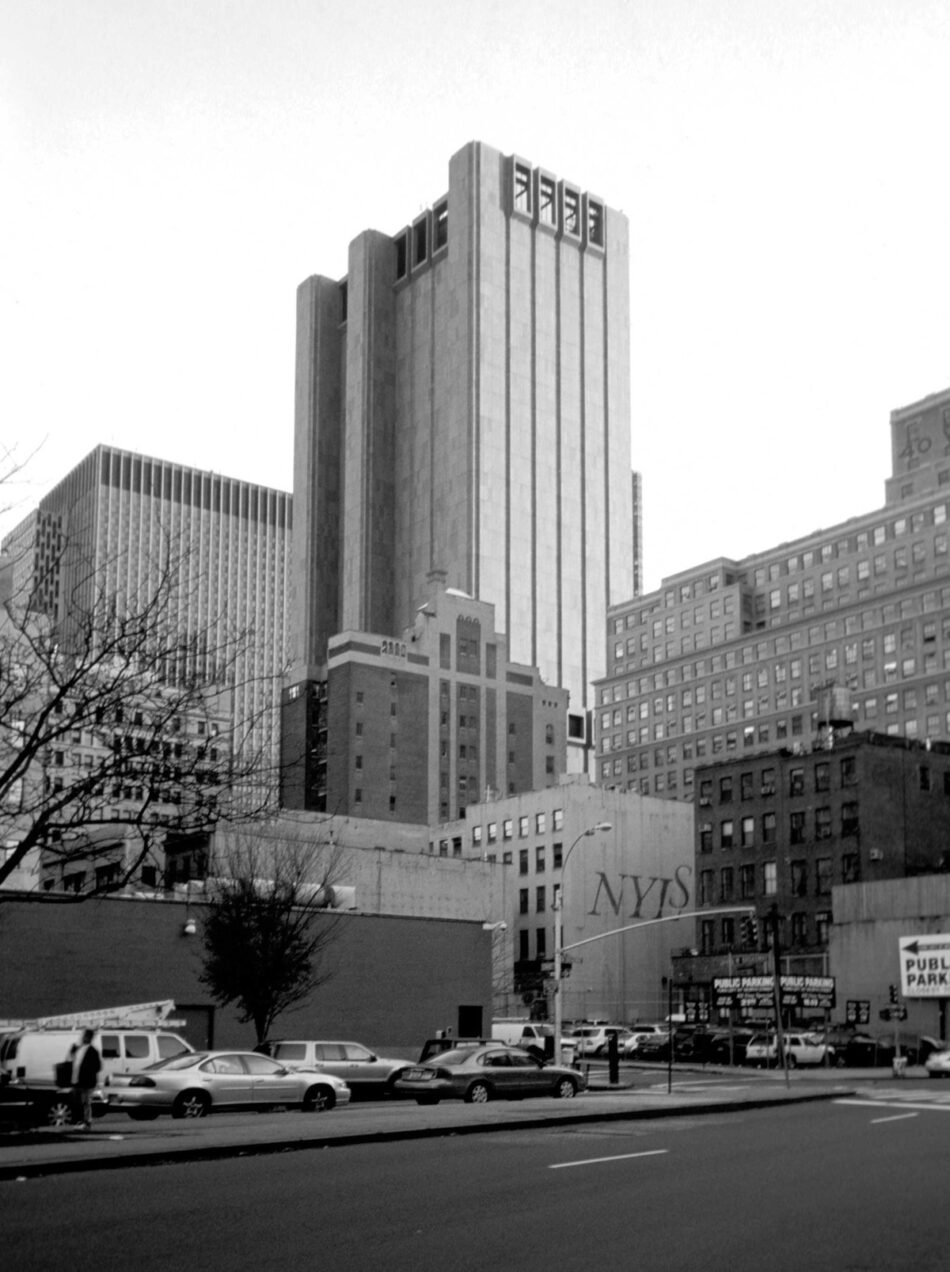
After Snowden, the government’s capacity to monitor our transactions in virtual space has led many to be concerned about what happens in the NSA’s recently constructed $2 billion Utah Data Center. But what of the ability of commercial entities to shape our experiences behind the scenes, to tune what products we are exposed to as we surf, or to determine what rights and privileges our credit history entitles us to? Take Google: the search giant’s greatest innovation is not the search itself, rather how the corporation tunes its search results individually to modulate what its algorithms calculate we should see.
If this scenario reads like 1984 extrapolated to an exponential level, Foucault reminds us that power is nondirectional. Power does not merely exert itself from the top down; it permeates a social regime from all directions. This is the critical point in control society: we know about Snowden, we know about what Google does with its data, yet our protests will be feeble. In the end, we will do nothing. Instead, little by little, we give up more and more of our information to scrutiny. As long as we don’t really know who is tracking us, we will continue to tell ourselves that it’s okay.
I’d like to suggest that this isn’t a failure of will on our part, but something we bring upon ourselves. Deleuze concludes that under control society, with the breakdown of public and private (surely exacerbated a thousandfold since 1990), individuals cease to exist, becoming “dividuals,” fragmentary selves that can then be discretely targeted by corporations. Instead of Cartesian nomads, we are free-floating assemblages of status updates. But how then to ward off a new feeling of alienation?
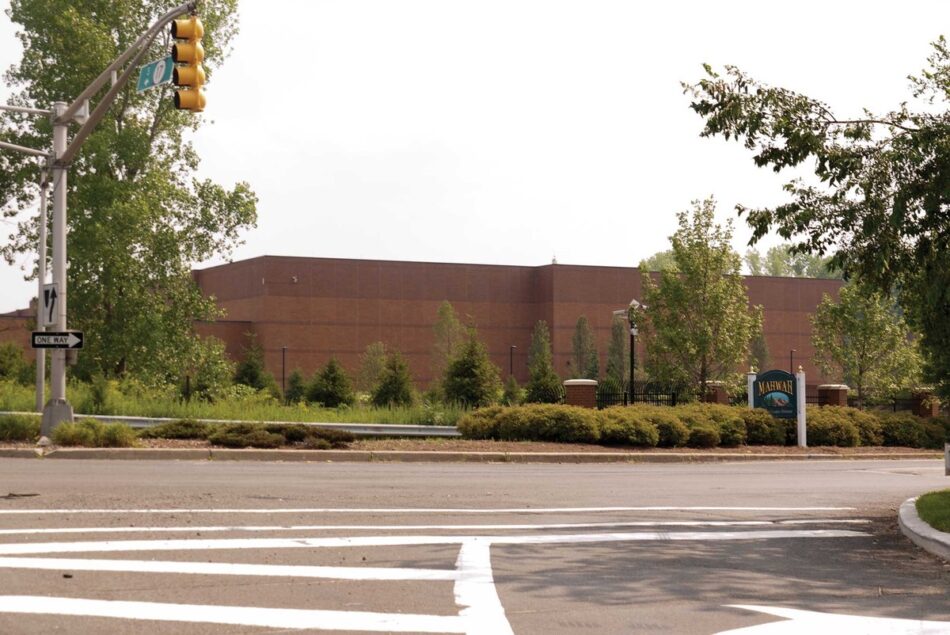
Jacques Lacan describes the process of identity formation as taking place through the mirror stage, when a child sees itself in a mirror and realizes that it is a whole entity: move this hand and that child’s hand moves, smile and the child before you smiles. To know that we are watched is to know that we still have agency—that this agency matters to someone. To know someone is watching is to know one is alive. Obviously, our social networks validate us by reminding us that we have an audience, but more than that, the knowledge that the Net itself is watching reassures us. It is no coincidence that at the turn of the millennium, as network culture first matured, reality TV became—for a time—the most watched genre of television.
We won’t find an easy way out of this situation anytime soon. Snowden’s disclosures just confirmed what we knew. Time’s “Man of the Year” for 2013 was the Pope, who assured us that God is watching, not an engineer who revealed that the government is watching. The former reminds us of how we want to be watched, whereas the implications Snowden raised ultimately aren’t so important. We aren’t doing anything wrong, we say to ourselves; therefore we are safe, hence ensuring the continuation of network culture. More than that, since nobody has yet come for us, our desire to want to know we are safe from ourselves is fulfilled. What we are doing is okay, we have nothing to hide.
Kazys Varnelis is Director of the Network Architecture Lab at the Columbia University Graduate School of Architecture, Planning, and Preservation; he is cofounder of the architecture collective AUDC.

